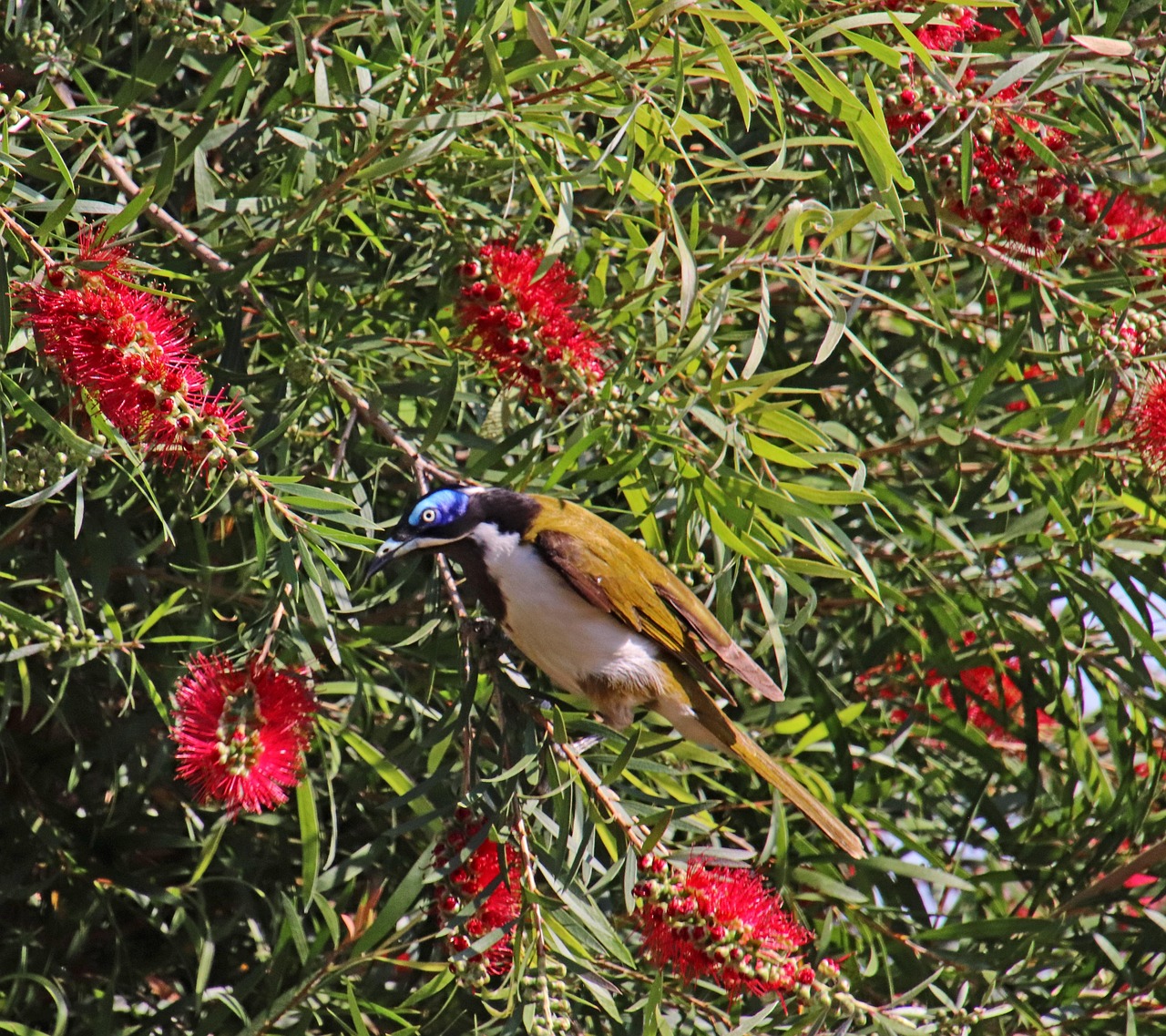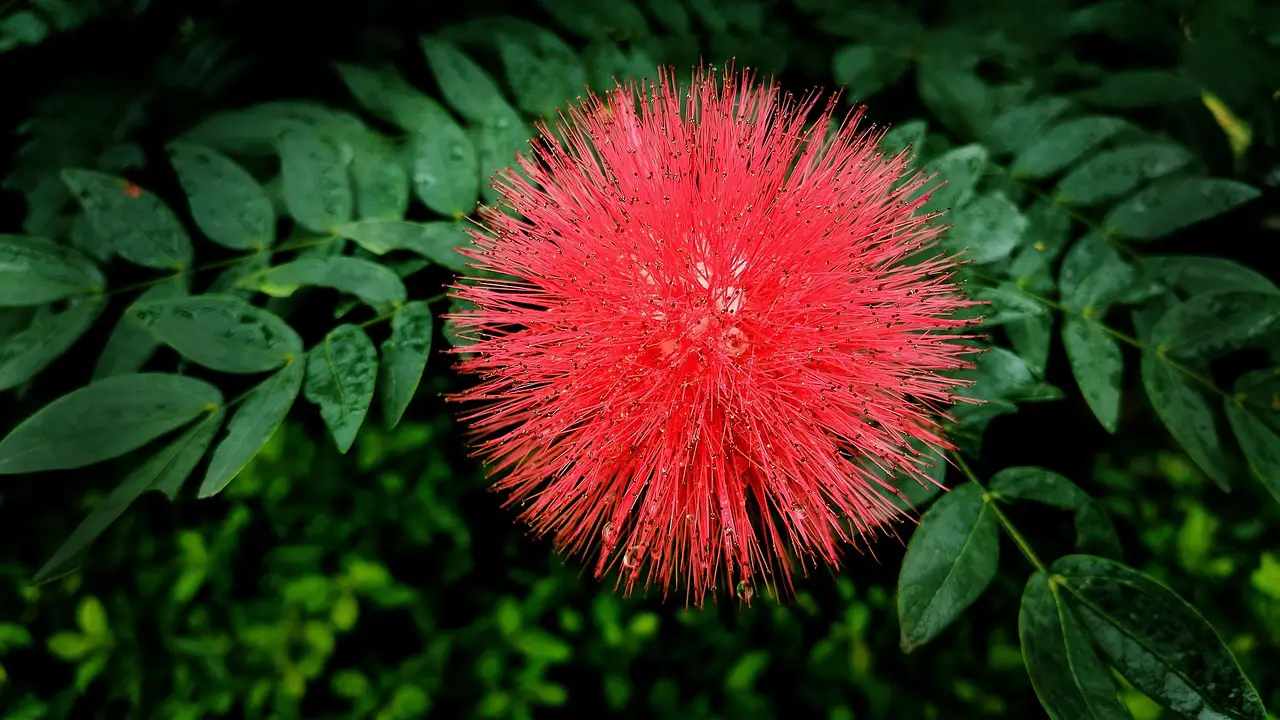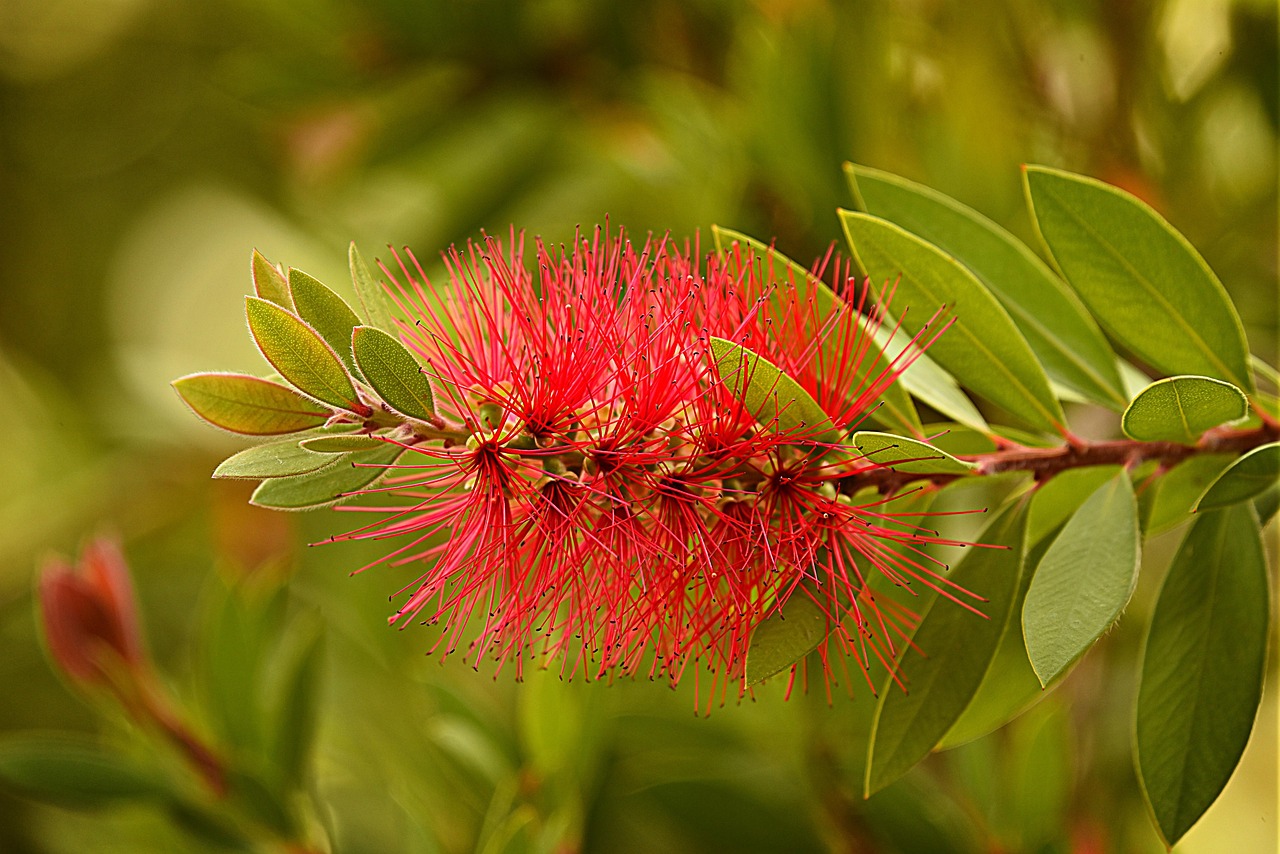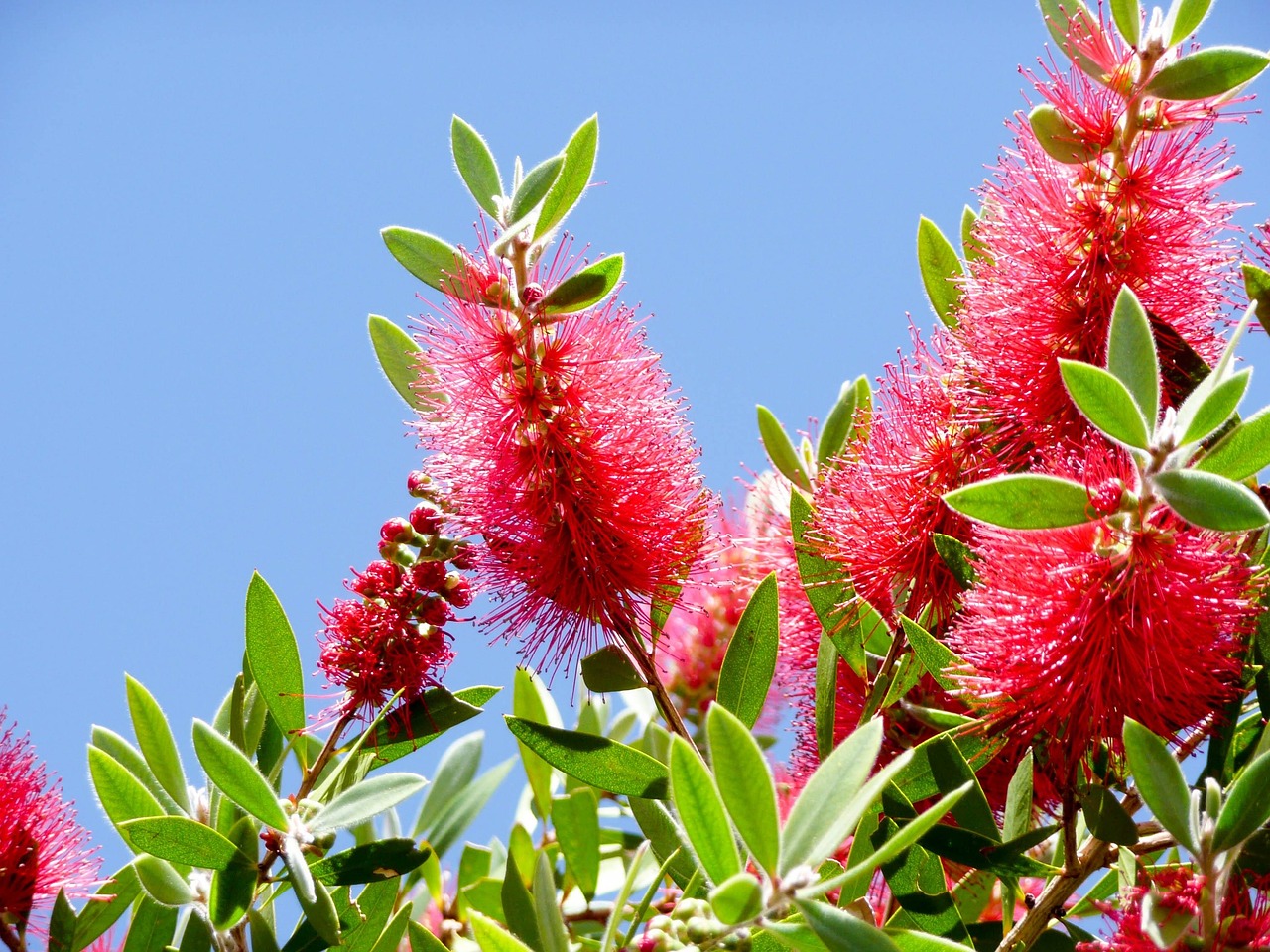The bottlebrush tree, known for its striking red flowers and lush foliage, typically exhibits a moderate growth rate of 12 to 24 inches per year, depending on environmental conditions and care. With the right nurturing, it can flourish and add vibrant color to any garden display.
The bottlebrush tree, scientifically known as Callistemon, is native to Australia and is prized for its unique and eye-catching flowers that resemble a bottle brush. These trees are popular in gardens due to their vibrant blooms and ability to attract birds and pollinators. Understanding the growth rate of the bottlebrush tree is essential for gardeners aiming to incorporate this stunning species into their landscapes.

Growth rates can vary significantly based on several factors, including soil quality, climate, and care practices. In optimal conditions, these trees can grow rapidly, providing a lush backdrop or focal point in gardens. Below are key factors influencing the growth rate of bottlebrush trees:
- Soil Quality: Well-draining soil rich in organic matter promotes healthy growth.
- Watering Regimen: Consistent watering in dry periods supports faster growth.
- Sunlight Exposure: Full sun is ideal for maximum flowering and growth.
- Fertilization: Using a balanced fertilizer can enhance growth rates.
- Pruning Practices: Regular pruning encourages bushier growth and more blooms.
Understanding Bottlebrush Tree Growth
The growth rate of the bottlebrush tree is often categorized into stages. During the initial establishment phase, which lasts approximately one to two years, the tree focuses on developing a strong root system. After this period, the growth rate typically accelerates significantly. The following table outlines the various stages of growth for the bottlebrush tree:
| Growth Stage | Age (Years) | Growth Rate (Inches Per Year) |
|---|---|---|
| Establishment | 1-2 | 6-12 |
| Rapid Growth | 3-5 | 12-24 |
| Mature Growth | 6+ | 6-12 |
This table illustrates how the growth rate varies with age. In the early years, bottlebrush trees focus on establishing roots. As they mature, their growth can reach impressive heights and widths, making them suitable for various landscape designs.

The bottlebrush tree can reach a height of 10 to 15 feet when fully grown. However, with proper care and favorable conditions, some varieties may grow even taller. Additionally, these trees can spread out significantly, often achieving a width of up to 10 feet. This expansive growth makes them ideal for creating privacy screens or windbreaks in gardens.
Another aspect contributing to their appeal is the blooming period. Bottlebrush trees typically bloom during the warmer months, providing vibrant red or pink flowers that stand out against the green foliage. This not only adds aesthetic value but also attracts local wildlife, such as hummingbirds and bees, contributing to a lively garden atmosphere.
When planted in optimal conditions, such as full sun and well-draining soil, the bottlebrush tree can thrive with minimal maintenance. Regular watering during dry spells and occasional pruning to remove dead or overgrown branches can significantly enhance its growth rate and overall health.

In summary, understanding the growth rate of the bottlebrush tree is vital for gardeners seeking to create stunning displays. By providing the right conditions and care, these trees can transform any garden into a vibrant ecosystem filled with color and life.
Factors Affecting Growth Rate
The growth rate of the bottlebrush tree can be influenced by various environmental and care-related factors. Understanding these aspects can help gardeners optimize conditions for better growth and vibrant displays. Below are the primary factors to consider:
- Climate: Bottlebrush trees thrive in warm climates. They prefer USDA hardiness zones 8 to 11, where temperatures remain mild. In colder regions, they may struggle to grow or survive.
- Soil Type: Well-draining sandy or loamy soil is ideal. Heavy clay soils can retain too much moisture, leading to root rot.
- Sunlight: These trees require full sun exposure for at least six hours daily to flourish. Insufficient sunlight can hinder their growth and flowering.
- Watering: Regular watering is crucial, especially during dry spells. However, overwatering can be detrimental. It’s essential to strike a balance.
- Fertilization: A balanced fertilizer can promote growth. Fertilizing during the growing season helps provide the necessary nutrients.
Soil Preparation for Optimal Growth
Preparing the soil properly before planting a bottlebrush tree can significantly impact its growth rate. Here are steps to prepare the soil:

- Select Location: Choose a sunny spot with well-draining soil.
- Test Soil pH: Bottlebrush trees prefer slightly acidic to neutral pH levels (around 6.0 to 7.0).
- Add Organic Matter: Mix in compost or aged manure to improve soil structure and nutrient content.
- Ensure Drainage: If planting in clay soil, consider creating raised beds or incorporating sand to enhance drainage.
Pest and Disease Management
While the bottlebrush tree is generally resilient, it can be susceptible to pests and diseases that may affect its growth rate and overall health. Common issues include:
- Aphids: These small insects can sap the tree’s vitality. Regular monitoring and introducing beneficial insects can help manage their population.
- Scale Insects: Scale can inhibit growth by feeding on sap. Treatment involves manual removal or using horticultural oils.
- Root Rot: Caused by overwatering or poor drainage, root rot can be detrimental. Ensuring well-drained soil is crucial for prevention.
- Leaf Spot: Fungal infections may lead to unsightly spots on leaves. Good air circulation and proper watering techniques can minimize this issue.
Natural Predators for Pest Control
Utilizing natural predators can be an effective way to control pests on bottlebrush trees without resorting to chemical pesticides. Some beneficial insects include:
- Lacewings: Their larvae feed on aphids and other soft-bodied pests.
- Ladybugs: Known for their appetite for aphids, ladybugs can help keep pest populations in check.
- Parasitic Wasps: These tiny wasps lay their eggs inside pest insects, effectively controlling their numbers.
Pruning for Healthier Growth
Pruning is essential for maintaining the health and appearance of bottlebrush trees. Regular pruning encourages bushier growth and promotes more abundant flowering. The best time to prune is immediately after blooming. Here are some tips for effective pruning:
- Remove Dead Wood: Cut away any dead or diseased branches to improve air circulation.
- Shape the Tree: Trim the tree to maintain its desired shape while avoiding excessive cutting.
- Avoid Over-Pruning: Excessive pruning can lead to stress and hinder growth; aim for light trims rather than heavy cuts.
By following these guidelines, gardeners can ensure their bottlebrush trees grow vigorously and provide stunning displays throughout the growing season. With thoughtful care and attention, these trees will flourish and enhance any garden landscape.
Choosing the Right Bottlebrush Variety
When considering the addition of a bottlebrush tree to your garden, selecting the appropriate variety is crucial. Different species exhibit varying growth rates, sizes, and flower colors. Here is an overview of popular bottlebrush varieties commonly used in landscaping:
| Variety | Growth Rate (Inches Per Year) | Height (Feet) | Flower Color |
|---|---|---|---|
| Callistemon citrinus | 12-24 | 10-15 | Red |
| Callistemon viminalis | 24-36 | 15-25 | Pink |
| Callistemon pallidus | 12-24 | 6-10 | Yellow |
| Callistemon ‘Little John’ | 6-12 | 3-4 | Red |
This table highlights some of the characteristics of various bottlebrush varieties. Knowing these details can help you select a species that fits your garden’s design and climate needs.
Popular Varieties Explained
Here is a closer look at some of the most popular bottlebrush varieties:
- Callistemon citrinus: Commonly known as the lemon bottlebrush, it features vibrant red flowers and can grow up to 15 feet tall. This species is particularly favored for its rapid growth rate.
- Callistemon viminalis: Known as the weeping bottlebrush, it can reach heights of 25 feet. Its branches have a graceful droop, making it an excellent choice for creating a dramatic focal point.
- Callistemon pallidus: This variety offers unique yellow flowers and is smaller than other species, making it suitable for more compact spaces.
- Callistemon ‘Little John’: A dwarf variety, it typically grows only 3 to 4 feet tall. It is ideal for small gardens or container planting.
Planting Techniques for Growth Optimization
The planting method used can significantly affect the growth rate of the bottlebrush tree. Here are some essential techniques to follow when planting:
- Selecting the Right Time: The best time to plant bottlebrush trees is during the spring or fall when temperatures are moderate.
- Digging the Hole: Ensure the planting hole is twice as wide as the root ball but no deeper than necessary. This encourages lateral root growth.
- Adequate Spacing: Space multiple trees at least 6 to 10 feet apart to allow for proper air circulation and sunlight exposure.
- Watering Immediately After Planting: Saturate the soil after planting to eliminate air pockets around the roots.
Caring for Newly Planted Trees
The care provided to newly planted bottlebrush trees is crucial for their establishment and long-term growth. Consider the following tips:
- Regular Watering: Keep the soil moist but not waterlogged during the first few months after planting.
- Mulching: Apply a layer of organic mulch around the base to retain moisture and suppress weeds.
- Pest Monitoring: Check regularly for signs of pests or diseases, especially in the early weeks after planting.
The Benefits of Bottlebrush Trees in Gardens
Bottlebrush trees offer numerous benefits that make them an excellent choice for garden displays. Here are some key advantages:
- Aesthetic Appeal: Their vibrant flowers add color and interest to any landscape.
- Wildlife Attraction: The flowers attract bees, butterflies, and hummingbirds, enhancing garden biodiversity.
- Erosion Control: The extensive root system helps prevent soil erosion on sloped landscapes.
- Low Maintenance Requirements: Once established, these trees require minimal care, making them perfect for busy gardeners.
Incorporating bottlebrush trees into your garden design not only beautifies your space but also creates a thriving ecosystem that supports local wildlife. With the right variety and care, these trees can be a stunning addition to any garden landscape.
Additional Care Considerations
Beyond the basic requirements for planting and maintaining bottlebrush trees, there are additional care considerations to keep in mind. These factors can significantly enhance the growth rate and health of your trees:
- Seasonal Adjustments: In colder climates, consider protecting the tree during winter months by wrapping the base and covering it with mulch. This helps insulate the roots and prevent frost damage.
- Regular Monitoring: Keep a close eye on your trees for any signs of stress, such as yellowing leaves or stunted growth. Early identification of issues can lead to better management strategies.
- Optimal Spacing: When planting multiple trees, ensure sufficient spacing to allow for air circulation. This reduces the risk of fungal infections and promotes healthy growth.
- Companion Planting: Consider planting complementary species nearby that can help enhance the ecological balance in your garden. Plants that attract beneficial insects can support bottlebrush trees in their growth.
Landscape Design Ideas with Bottlebrush Trees
Incorporating bottlebrush trees into landscape design can create stunning visual displays. Here are some ideas to consider when planning your garden:
- Focal Points: Use larger varieties as focal points in your garden. Their height and vibrant flowers can draw attention and serve as a centerpiece.
- Mixed Borders: Combine bottlebrush trees with other flowering plants and shrubs to create a mixed border that offers year-round interest.
- Privacy Screens: Plant multiple bottlebrush trees in a row to create a natural privacy screen. Their dense foliage provides excellent coverage while adding beauty to your space.
- Container Gardening: Dwarf varieties are perfect for container gardening. They can brighten patios or balconies with their colorful blooms.
These design ideas not only enhance the aesthetic appeal of your garden but also promote biodiversity by attracting various pollinators and wildlife. The versatility of bottlebrush trees makes them suitable for different landscaping styles, from formal gardens to more naturalistic settings.
Final Thoughts
The bottlebrush tree stands out as a remarkable addition to any garden, offering not just beauty but also environmental benefits. With its moderate growth rate, vibrant flowers, and low maintenance requirements, this tree is ideal for both novice and experienced gardeners alike. By understanding the factors that influence its growth, selecting the right variety, and implementing proper care techniques, you can ensure that your bottlebrush trees thrive.
As you consider enhancing your garden with these stunning trees, remember that their ability to attract wildlife and add color to your landscape can transform any outdoor space into a vibrant ecosystem. Whether you are looking for a statement tree or a subtle addition to your garden design, the bottlebrush tree is an excellent choice that will provide enjoyment for years to come.
With thoughtful planning and care, the bottlebrush tree will not only enrich your garden’s aesthetic but also contribute positively to the local environment, making it a valuable addition to any landscape.
